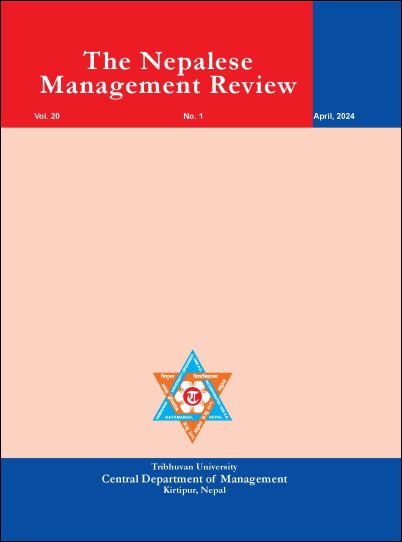Comparative Analysis of Financial Statement in Selected Banks: A Case Study in the Context of Nepal
DOI:
https://doi.org/10.3126/tnmr.v20i1.64736Keywords:
commercial banks, financial ratios, liquidity, performance, profitabilityAbstract
The main objective of the study is to assess and compare the financial statement analysis of Machhapuchchhre Bank Limited (MBL) and Kumari Bank Limited (KBL). This research used a quantitative research technique. Secondary data were adopted over the latest 7 years from 2072/73 BC to 2078/79 BC. As of today, there are 20 commercial banks, among them MBL and KBL were taken as sample units applying the purposive sampling method. Ratio analysis, Mean (X̄) Standard Deviation (SD), and coefficient of variation (CV) were applied for the analysis of data. Both the banks have the current assets more than two times or 200% of the current liabilities. It is found that both banks can repay their short-term obligation. The standard measure of quick ratios was not met by both banks. It is found that both banks have no capacity to pay current obligations immediately. The average Return on Asset (ROA) of the selected banks appeared to be lower ratios. It can be found that the available assets are not managed efficiently. The financial statement analysis in terms of Return on Equity (ROE) of the sample banks was found efficient. It is found that management is efficient in maximization of shareholder’s equity. It is concluded that sample banks have a strong liquidity position in terms of the current ratio, but a poor position in terms of quick ratio. ROAs of the banks appeared to be unsatisfactory whereas ROEs remained to be reasonable.




